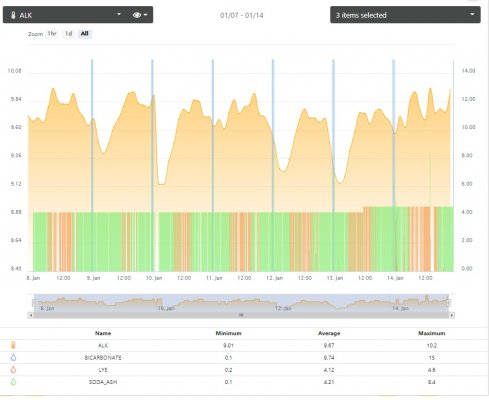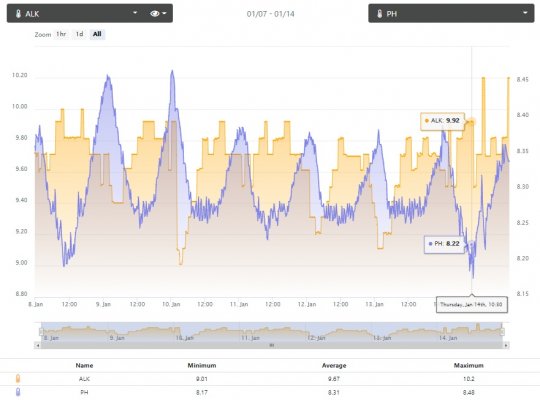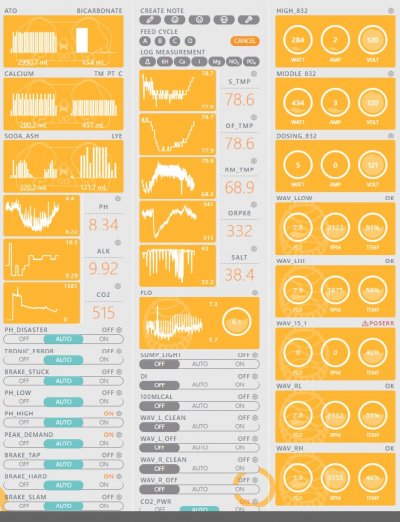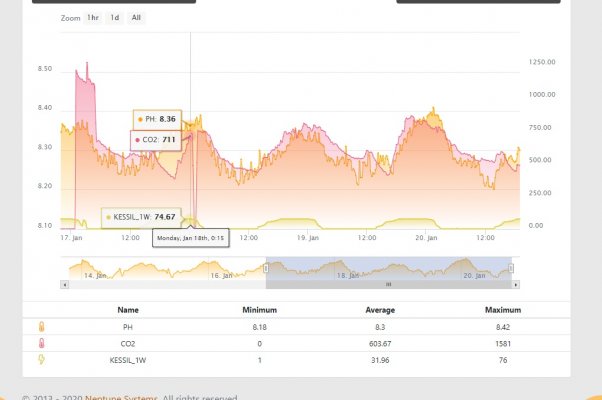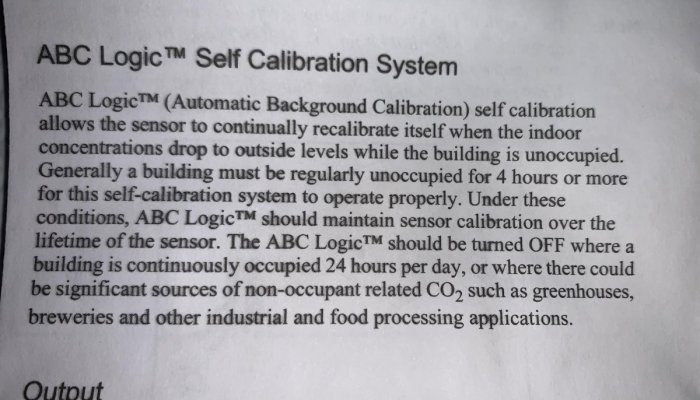- Joined
- Sep 13, 2018
- Messages
- 360
- Reaction score
- 333
Interesting findings! it's pretty wild how much things we do unconsciously(breathing) can affect our reefs. I've heard neptune urban legends about a man that caught his wife cheating via his pH graph... I'm starting to believe how plausible that can be. I'd love to see you have great success with the scrubber. I've been "against" them from the beginning; mostly because of things that make it dangerous for the average user. saturating the media could be disasterous so you have to set it up *JUST* right. If the media suddenly expires while you're on away, alk demand could drop drastically and skyrocket alk without dosing control automation. From what I've seen, doesn't seem cheap or sustainable. Don't get me wrong, I have absolutely no doubt you have the knowledge and tools to use a scrubber safely. It's something I'd definitely consider adding once you perfect your methods, specifically in tandem with Lye dosing. I'm pretty sure you mentioned it somewhere but how is your air intake bypass with solenoid(or pinch valve?) plumbed? Do you toggle between pulling air through the scrubber and simply bypass the scrubber recirculating only the air within the skimmer body? or do you recirculate and periodically pull room air? It seems that you'd burn through media fast if you pulled room air. it's like ticking in the wind- Scrubbing co2 from the water only to reintroduce it in the system when pH reaches your max setpoint.And I just ordered that CO2 sensor from ebay. Its coming from NC, so hopefully it won’t take too long to get here to florida. I also looked through the manual for it and in addition to the 0-5V output that would work with the ASM it looks like it also has a relay output that can be set to trip at a specific CO2 level, so I’m thinking I might just be able to use that with a port on a breakout box.
Admittedly, I don't know all the chemistry behind how acids interact with water so I may be talking out of my butt here. My understanding is that CO2 bonds with a water molecule to form carbonic acid or H2CO3. pH is a negative logarithmic scale of free hydrogen ions in the water meaning that water with a low pH has significantly more free H Ions than water with a "normal" pH. Adding soda ash(Na2CO3) raises pH because the carbonate wants to pull in a H ion to create bicarbonate(HCO3) which makes up ~97% of reef alkalinity. chemical reactions work in both directions and carbonic acid(H2CO3) isn't all that different than bicarbonate(HCO3)... Does carbonic acid disassociate into bicarbonate when the pH(concentration of H ions) presents the proper conditions? Do corals in our oceans get their alkalinity through atmospheric CO2? being a photosynthetic organism I'd think coral gets it's carbon from the same initial source plants use. If this logic is true, does that mean a CO2 scrubber is just removing potential alkalinity from the system? that would explain the sudden "increase in alk demand" that people see from a scrubber.
Lye adds a hydroxide(OH) ion to the system and pulls in a free H Ion to create H20. the reduced free hydrogen concentration means a higher pH and that "pesky" carbonic acid disassociates from H2CO3 to HCO3 or bicarbonate alkalinity. we're using hydroxide to turn an acid into "alkalinity"- the reef's buffering system against acid. If you're following the word vomit logic typed above, you may see why I feel CO2 scrubbing is a backwards way of controlling pH. You're removing something then adding more of another thing to correct the levels. On the other hand, CO2 scrubbing doesn't add that extra sodium ion... but you also add sodium when you dose more soda ash or bicarb to fix that "sudden increase in demand"
Sorry for the rambling. I hope I don't sound argumentative here... I'm genuinely curious about which methodology(scrub vs dose) is *right*. Both certainly seem to work. I think it all boils down to overall cost in the end.
Last edited:






